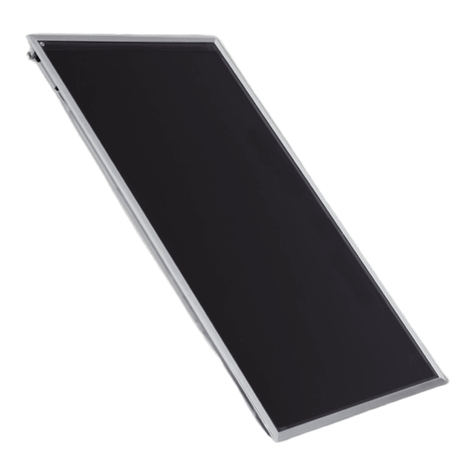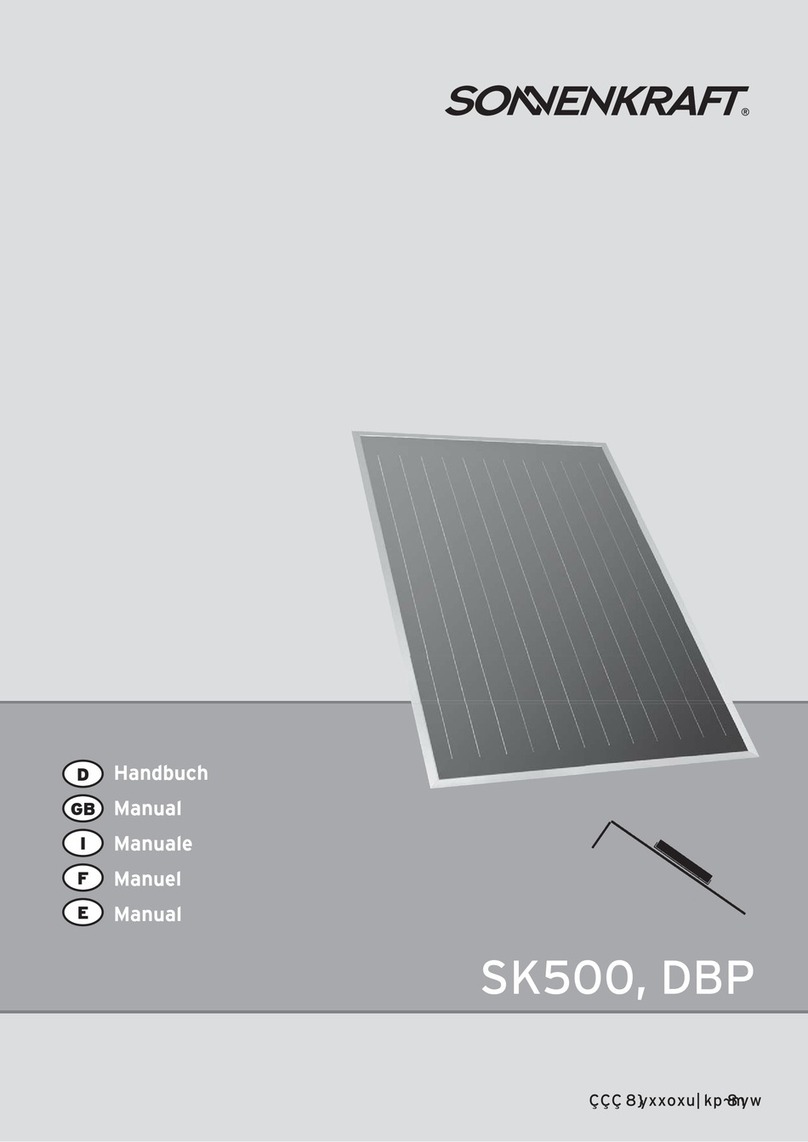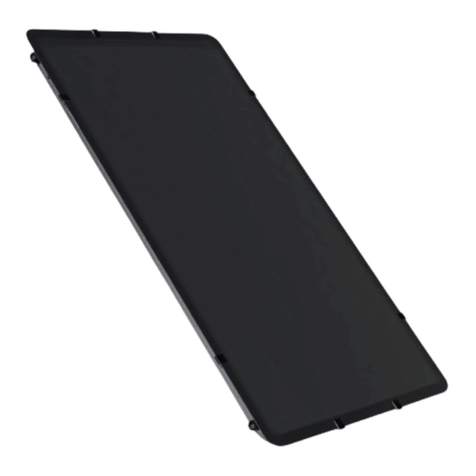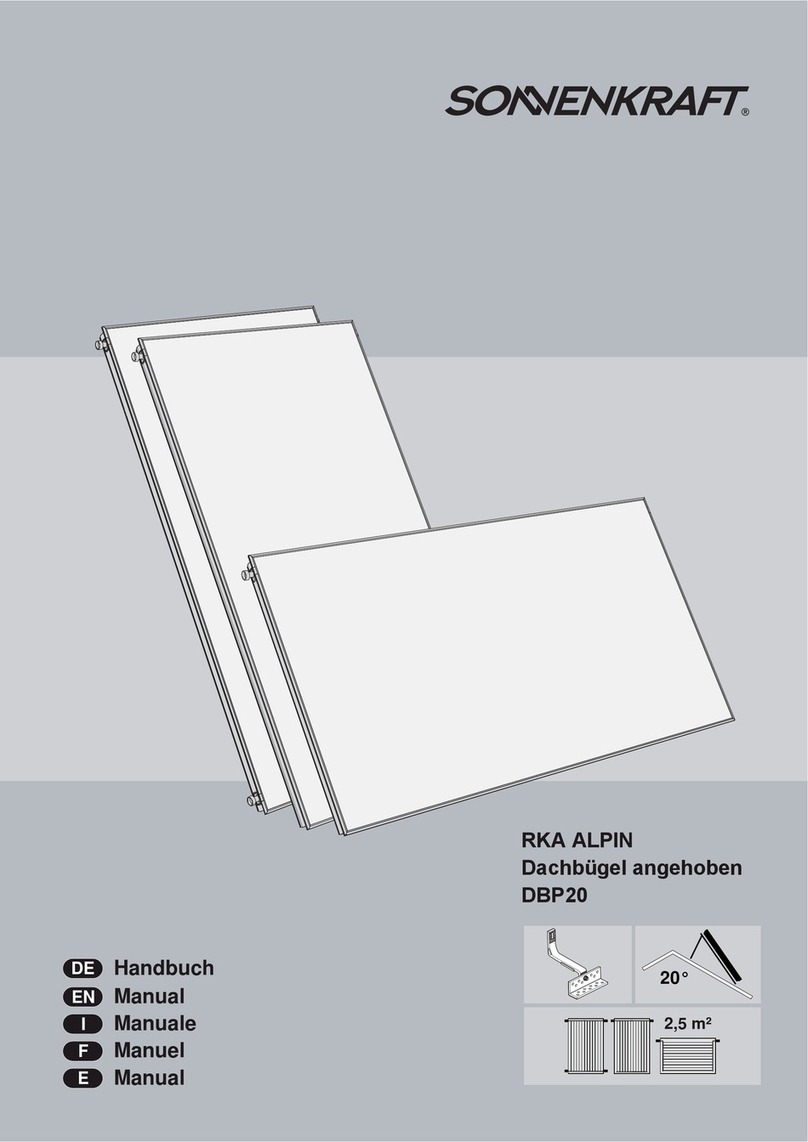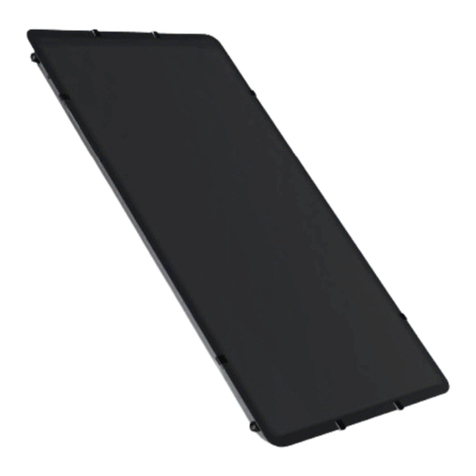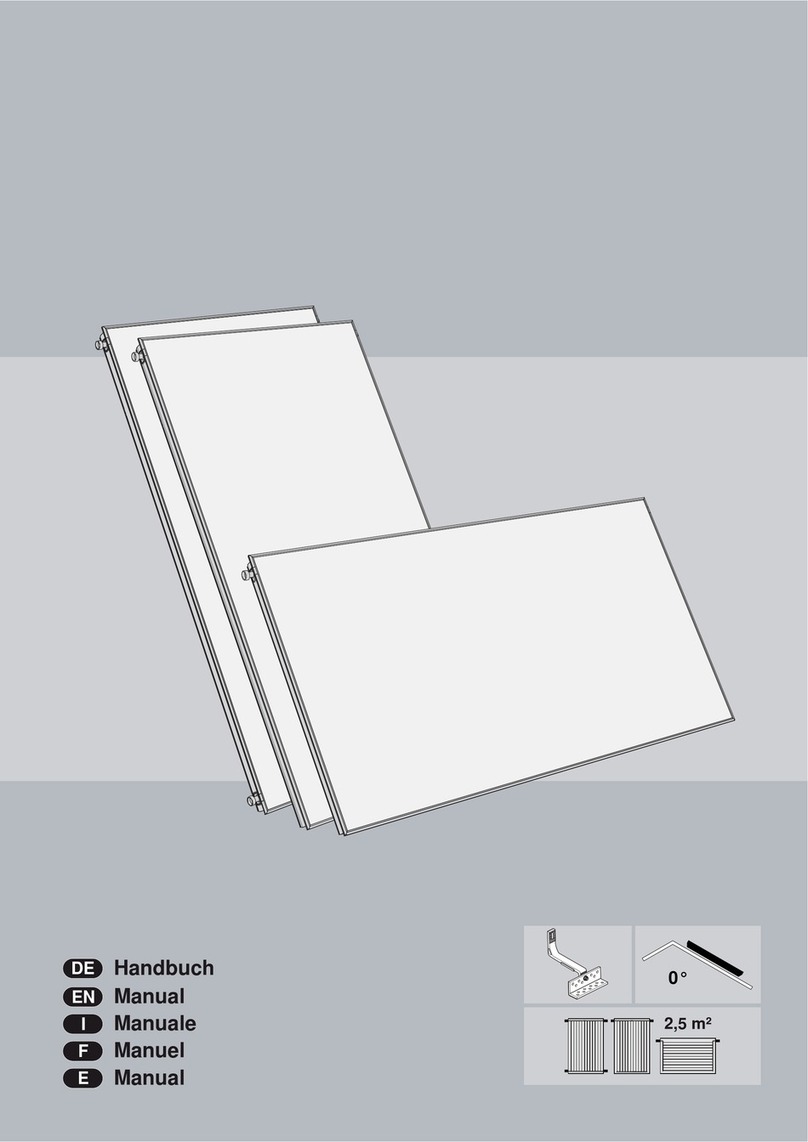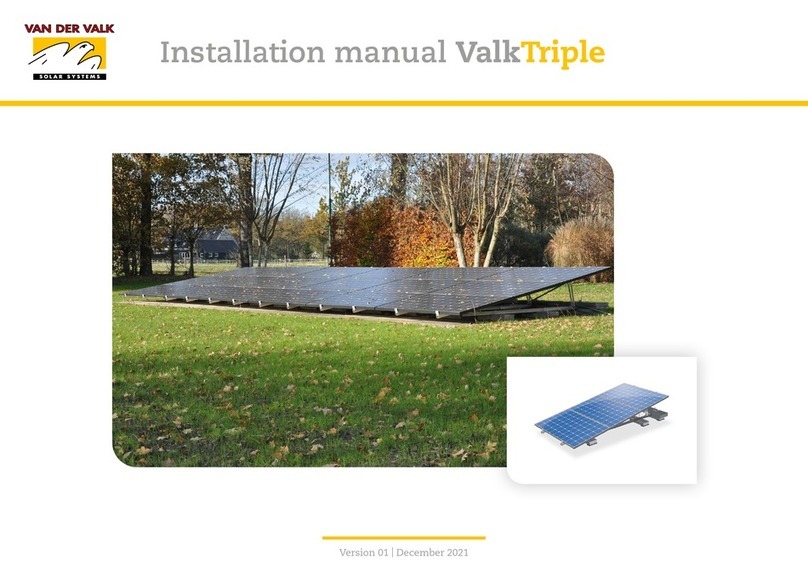Seite 4von 12
KIOTO_Installation_manual_2021 © KIOTO Photovoltaics GmbH, Solarstraße 1, 9300 Sankt Veit/Glan - Österreich 06/2021
The use of the modules relates to class A: dangerous voltage (IEC 61730: higher than 50V
DC, EN 61730: higher than 120V), dangerous power applications (higher than 240W) which
are general accessible, according to EN IEC 61730 -1 and -2. Protection class II regulations
are also fulfilled.
Maximum reverse over current verified according to IEC 61730 -2, MST 26 of the module:
15A.
The Current rating of the diodes is 16A according to the manufacturer's specifications. Under
open field conditions, photovoltaic modules can produce voltages and/or currents that are
higher than specified on the nameplate. To consider this in the rating dimensioning of other
system components (e.g. electrical lines, electrical fuse, …) that are directly connected to the
PV generator, the Isc and Uoc values should be multiplied by the safety factor 1.25 or
designed by a specialist.
The permissible ambient temperature range for operation and storage is -40 ° C to + 85 ° C.
Safety and installation instructions for mounting
Consider general health and safety regulations relating to mounting equipment on roofs
and/or buildings. Secure the modules, so that they cannot fall down during mounting and in
further operation. Take care and consider the wind and snow load figures for the affected area.
In addition, observe the following:
Electrically
The following should provide a basis to avoid fire, formation of sparks and deadly electrical shock;
Therefore, they have to be followed stringently. Remember, in de –energized state, high contact
voltage could occur and / or deadly electric arc can be generated. Cover the single module with a
lightproof material during the mounting process.
Modules generate electricity as soon as they are exposed to any kind of light. This is unrelated to
whether the module has already been connected or not. So voltage may occur which can be fatal in
some circumstances!
Never install damaged photovoltaic modules.
Never touch cable heads (especially exposed ones) during the mounting, especially when the
module is exposed to light or sunlight.
The tools used for mounting should be approved, isolated and voltage proofed (according to
system voltage).
Do not bring electrically conducting parts (not isolated tools, jewellery or others) in contact with
the photovoltaic module, the cable heads or the electrical plugs during the mounting.
Conductive objects include uninsulated tools, jewelry or other conductive materials.
In case of a roof mounting, additional installations like fuses, DC disconnectors, earth fault
detection etc. may be necessary. In this case, please contact the appropriate specialists
before installation.
Never use the photovoltaic modules near or in rooms, where flammable liquids or gases are
stored or where theses liquids or gases could escape.
When modules are connected in serial, only modules with the same current should be used.
When you are using a parallel connection, only modules with the same voltage should be
used. Never operate the modules with a higher voltage than the maximum system voltage.
The maximum allowed number of modules used in a serial connection is an outcome of the
maximum input voltage / maximum input current of the used inverters / charge regulators, the

